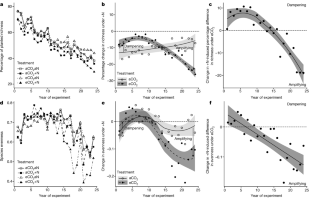2024-10-22 マサチューセッツ工科大学(MIT)
<関連情報>
- https://news.mit.edu/2024/how-climate-change-will-impact-outdoor-activities-1022
- https://agupubs.onlinelibrary.wiley.com/doi/10.1029/2024GL111607
- https://journals.ametsoc.org/view/journals/clim/37/12/JCLI-D-23-0346.1.xml
気候変動が「屋外活動日数」に及ぼす米国全土での影響 Climate Change Impact on “Outdoor Days” Over the United States
Yeon-Woo Choi, Muhammad Khalifa, Elfatih A. B. Eltahir
Geophysical Research Letters Published: 03 October 2024
DOI:https://doi.org/10.1029/2024GL111607

Abstract
The scientific discourse on climate change throughout the US has primarily revolved around changes in mean climate and/or climate extremes. However, little is known about the impacts of climate change on mild weather conditions despite its significant relevance to quality of life. Here, we adopt the concept of “outdoor days” defined as those relatively pleasant days when most people may enjoy outdoor activities (Choi et al., 2024). We project how climate change reshapes seasonality of US outdoor days: relatively large drops in summer, late spring, and early fall; and a significant increase in winter. However, annual outdoor days are projected to change slightly, with notable exceptions. We project relatively large drops in southeast (−23%), south (−19%), and Ohio Valley (−19%), and a significant increase in northwest (14%) toward the end of the century. Our findings have implications for quality of life in different regions, and for nation-wide travel and tourism.
Key Points
- We project how climate change reshapes seasonality of US outdoor days
- Future climate change will likely result in a northwest-southeast disparity in the projected change of annual outdoor days in the US
- We provide new evidence of the impact of global warming on the quality of human life, travel, and tourism in the US
Plain Language Summary
Here, we contribute to the understanding of how climate change will influence quality of life in the US by applying the concept of outdoor days—thermal comfort conditions allowing for outdoor activities, such as walking, jogging, and cycling by most people. We project using state-of-the-art global climate models that climate change will shift the seasonality of outdoor days, resulting in less frequent outdoor days in summer and more frequent outdoor days in the other seasons across the country. Our results highlight specific regional hotspots in the US where annual outdoor days could significantly decrease or increase with important implication for quality of life in different climate regions of the US.
気候変動が 「屋外日数 」に及ぼす南北格差 North–South Disparity in Impact of Climate Change on “Outdoor Days”
Yeon-Woo Choi,Muhammad Khalifa, and Elfatih A. B. Eltahir
Journal of Climate Published:31 May 2024
DOI:https://doi.org/10.1175/JCLI-D-23-0346.1
Abstract
Here, we introduce the concept of “outdoor days” to describe how climate change can affect quality of life for different communities and individuals. An outdoor day is characterized by moderate temperature, neither too cold nor too hot, allowing most people to enjoy outdoor activities. The number of “outdoor days” is a nonlinear function of the daily surface air temperature. If the latter falls within a specific range describing assumed thermal comfort conditions, then we assign that day as an “outdoor day.” Using this function, we describe climate change impacts on temperature differently, compared to other studies which often describe these impacts in terms of the linear averaging of daily surface air temperature. The introduction of this new concept offers another way for communicating how climate change may impact the quality of life for individuals who usually plan their outdoor activities based on how local weather conditions compare to their preferred levels of thermal comfort. Based on our analysis of regional variations in “outdoor days,” we present observational and modeling evidence of a north–south disparity in climate change impacts. Under high-emission scenarios, CMIP5 and CMIP6 models project fewer “outdoor days” for people living in developing countries, primarily located in low-latitude regions. Meanwhile, developed countries in mid- and high-latitude regions could gain more “outdoor days,” redistributed across seasons.
Significance Statement
We introduce a novel concept: outdoor days, characterizing surface air temperature conditions that allow for outdoor activities, such as walking, jogging, and cycling, by most people. We project that under high-emission scenarios of anthropogenic greenhouse gases, a north–south disparity of climate change risk will be enhanced considerably toward the end of this century due to more frequent outdoor days in the wealthy Global North and less frequent outdoor days in the deprived Global South.



